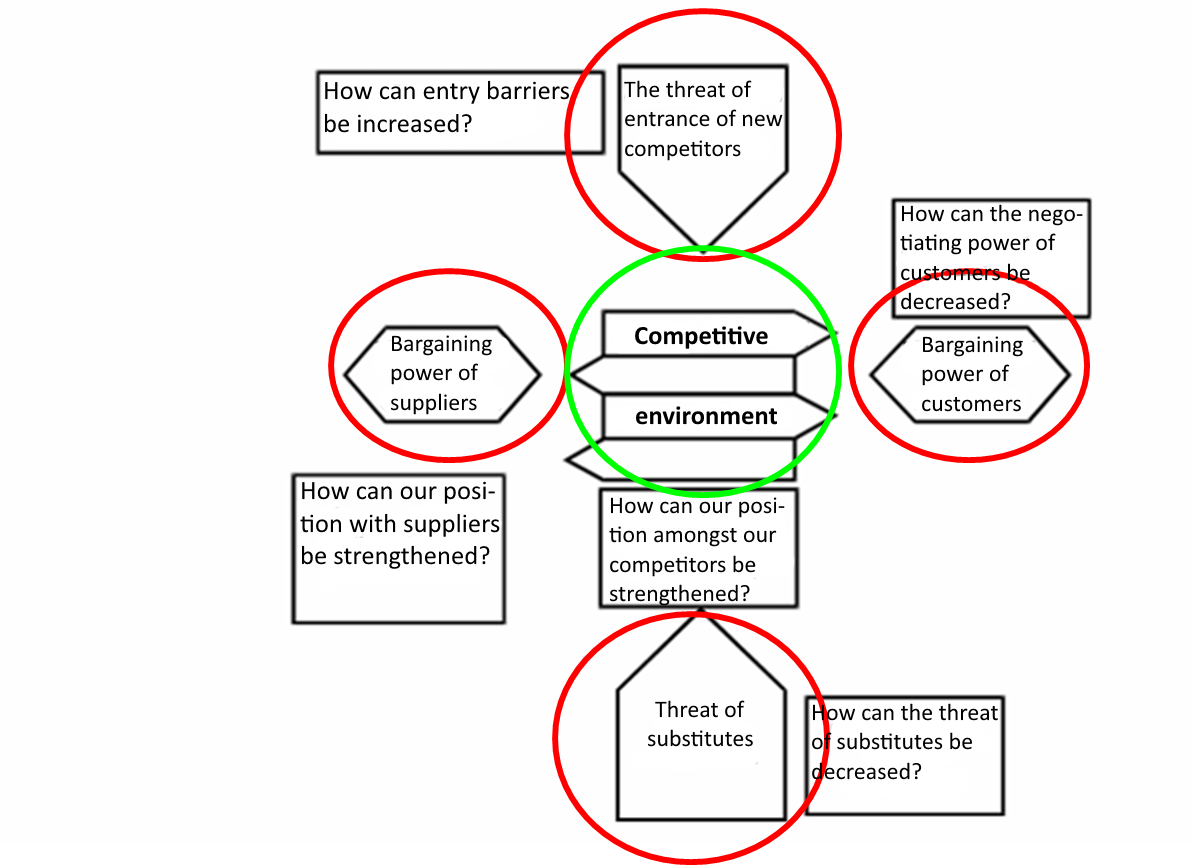5.3. Analysis of Competition in the Industry i.e. Porter Analysis
The Porter Five Forces Analysis is an interesting approach to take when looking at the company and its ability to compete. It is based on the presupposition that the company’s long-term ability to build a strong competitive position also significantly impacts the intensity of competitive rivalry (which can be either higher or lower) in a given sector where the company operates. If rivalry in the market is high and the company’s ability to negotiate its position is limited, the company will find itself at a strategic disadvantage. The company’s strategy should then be to actively strengthen and build its negotiating position. On the other hand, if the company’s negotiating position is strong, the company will then find it has a significant strategic advantage.
The Porter Analysis (de Witt, Meyer, 1994, Johnson, Scholes, 1993) recommends assessing the following when defining a strategy in terms of company’s negotiating abilities:
-
Whether the influx of new entrants and resulting, highly competitive environment pose as a threat. If so, the company’s strategy should work towards creating barriers which could prevent the entry of new competitors onto the market.
-
Whether other companies pose as a threat by acquiring customers not only due to competitive products and services, but also by way of substitutes. A substitute is any product or service which is entirely different, though it meets the same needs as the competition’s product or service. A substitute for travel agencies may be, for example, the trend of spending holidays at home (staycations) and spending leisure time doing other activities such as DIY projects etc.
-
Whether the customers’ high bargaining power poses as a threat, meaning customers could have significant bargaining leverage, allowing them to dictate conditions.
-
Similarly, whether the strong bargaining position of certain suppliers could pose as a threat, adversely impacting the company.
Although it is not easy in SMEs, the company strategy should address to what extent the company will protect itself from the risks which may arise in the aforementioned areas. Certain risks can be treated e.g. by effectively setting the generic competitive strategy, namely the differentiation strategy, which can set the company apart from its competition, making it difficult to emulate. The company thus lowers the risk of customers switching to competing brands. From this perspective, functional strategies can also strengthen the company’s position, for example indicating strong brand presence as a part of the marketing strategy, which can significantly increase customer loyalty to your company and thus weaken the competition’s position, while simultaneously increasing the perceived level of quality as well as the company’s reputation with suppliers – resulting in an increased desire to work with the company and a decrease in the supplier’s bargaining power.
A Practical Example: Solid Negotiations with Suppliers as the Basis of the Competitive Strategy
A small company from the outskirts of Prague based its strategy on maintaining relationships with suppliers and partners on a “win-win” basis. The company’s philosophy is that if partners are pressured into unwanted positions, the overall quality of the relationship will be worse, adversely impacting the company itself. Although it is not the norm in this given sector, the company makes an effort to find solutions that provide long-term advantages for both parties. This strengthens the company’s position in the eyes of its partners, while simultaneously allowing for the creation of efficient solutions for individual projects as a result of synergetic and motivational cooperation.

Porter Analysis (adapted from Keřkovský, Vykypěl, 2006)


